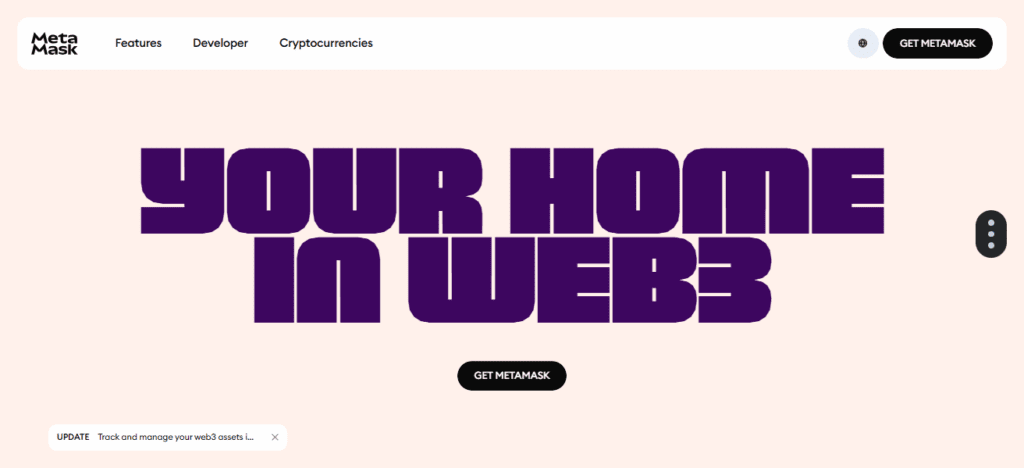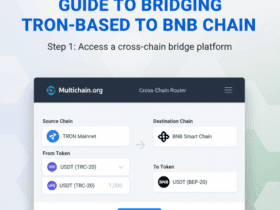In this guide, we will talk about how to safely store, protect, and secure cross-chain digital assets on different blockchains.
As cross-chain transactions grow in number, storing and safekeeping the tokens becomes increasingly essential.
I will discuss about the strategies, types of wallet, and primary security measures to keep your tokens protected from theft and other digital threats and vulnerabilities.
Understanding Cross-Chain Tokens
Cross-chain tokens are digital assets that can exist on more than one blockchain network at the same time and allows users to transfer value across chains.
Wrapped BTC or USDT on Ethereum and Binance Smart Chain are examples. Cross-chain tokens enable liquidity and interoperability
But entails risk such as bridge weaknesses and possible attacks on digital smart contracts. As a result, users are expected to do secure storage and proper management.
How To Store Cross-Chain Tokens Securely
MetaMask is an example of a multichain wallet since it enables users to interact with Ethereum, Binance Smart Chain, Polygon and other networks. To store tokens with MetaMask securely:

Set up MetaMask properly
Use a strong password and record the seed phrase in an offline secure location
Enable network support
Add the chains you plan to interact with in the “Custom RPC” field (BSC, Polygon, etc.)
Use hardware wallet integration
Connect a Ledger or Trezor to MetaMask to store private keys in cold offline storage
Verify token contracts
Only use cross-chain tokens from official sources to avoid scams which are very widespread
Regularly update MetaMask
Ensure the connected hardware wallet’s firmware is kept up to date to avoid exploitation from detected vulnerabilities”
Key Security Considerations
Private Key Management
Private keys are the pinnacle of digital ownership for your tokens. Losing these keys equates to the total loss of access. Recommended practices include:
- Do not disclose your private keys.
- Keep private keys stored offline in secure digital mediums (e.g., cold/printer wallets, encrypted USBs).
- Storing private keys in several secure offline locations can enhance security.
Seed Phrases
Seed phrases are extremely adequate to recovery wallets, so protecting them is crucial. Recommended methods include:
- Ensure to write them down instead of digitally saving them.
- Do not take screenshots of the phrases and avoid cloud drives.
- For advanced security, primally select a waterproof or fireproof backup for prolonged secure storage.
Multi-Chain Wallets
These wallets allow you to manage tokens on several blockchains through one singular interface.
Advantages: Wallets are convenient and allow for easy transactions and consolidation of portfolio.
Disadvantages: Wallets that are compromised will lead to the compromise of all assets. If one chain is compromised, the rest that are linked will be affected.
Smart Contract Risks When Bridging Tokens
Smart contracts are used to transfer tokens on cross-chains. There are several associated risks:
- Tokens can be lost due to unexploited glitches in the contracts.
- Unverified or unaudited bridges have more possibilities to lose tokens.* Before doing bulk transfers, check the
bridgecredibility and do smaller test transfers.
Types of Wallets for Cross-Chain Tokens

Hardware Wallets (Cold Wallets)
- Devices such as Ledger and Trezor
- Immune to online and phishing hacks as the private keys are stored offline.
- Best for long-term storage of large amounts of cross-chain tokens.
- Approving transactions requires physical interaction, providing additional safety.
Software Wallets (Hot Wallets)
- Wallets such as MetaMask and Trust Wallet, Coinbase Wallet
- Inconvenient due to internet connection, accessibility is more prone to cyber attacks.
- Best suited for active traders and frequent cross-chain transfer users.
- Enhanced security with strong passwords, 2FA, and careful seed phrase management.
Multi-Chain / Universal Wallets
- Wallets such as Rainbow Wallet and Trust Wallet with cross-chain support.
- Lets users operate tokens on various blockchains from one platform.
- Made easier for users by the streamlined cross-chain transfer and portfolio management.
- Single armored breach can expose assets across all connected chains.
Custodial Wallets (Optional Mention)
- Wallets from exchanges like Binance and Kraken
- Easy to use, but it has a counterparty risk, meaning you can lose your tokens if the exchange is hacked, or insolvent.
Best Practices for Secure Storage
Utilize Hardware Wallets for Cold Storage.
- Most cross-chain tokens can be stored in cold wallets: Ledger, Trezor, etc.
- Offline storage prevents hacking and phishing of your assets.
Enabling 2-Factor Authentication (2FA) for Software Wallets.
- Hot wallets and exchange accounts should be locked with additional protective measures.
- Authenticator apps are better than SMS.
Wallet Software Should be Updated Regularly.
- Wallet firmware and apps should be up to date.
- Many updates fix loopholes which, if not addressed, could be utilized by hackers.
Do Not Hold Large Amounts on Exchange Wallets.
- Like all services, exchanges can be hacked or can suffer outages.
- Only small, transactional amounts should be held on exchange wallets.
Audit and Verify Bridges and dApps Before Cross-Chain Transfers.
- Only trusted and audited bridges should be used to cross chains for tokens.
- Make small test transfers to avoid losing larger amounts.
Conclusion
In concslion Cross-chain tokens needs planning, tokens security tools and somewhat a discipline.
Hardware wallets are used to store long term, software wallets with 2FA, verifying bridges, and relegating backup seed phrases offline.
In doing this, you lessen the risks, your assets are safe even on multiple chains and you can confidently move.
FAQ
Tokens that exist on multiple blockchains, enabling transfers across different networks.
Use hardware wallets like Ledger or Trezor for long-term storage and keep private keys offline.
Yes, for convenience, but enable 2FA, verify token contracts, and avoid storing large amounts.
Only for small, short-term holdings; they carry higher risks of hacks or outages.
Use reputable, audited bridges and perform small test transfers before large amounts














Leave a Reply